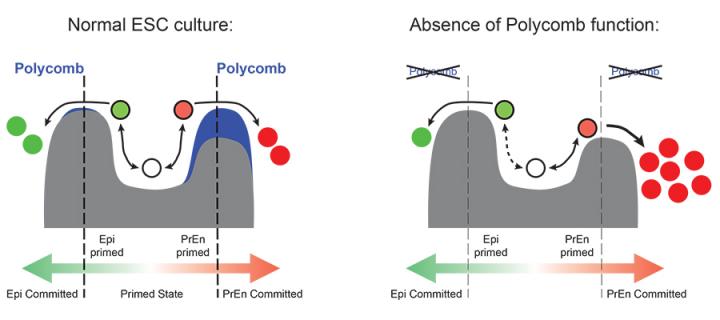Epigenetics reins in stem cell differentiation
e-Life article reveals role for polycomb in stem cell priming: October 2016

Like the very early embryo from which they are derived, embryonic stem cells are capable of deciding to either contribute to the embryo proper (epiblast), or to extra-embryonic structures that will support the growth and development of the embryo (primitive endoderm). In cell culture, embryonic stem cells dynamically explore these two possible cell states, but without fully committing to either of them. This process is called priming and is thought to be an important property of stem cells.
Illingworth and colleagues have investigated how priming is controlled. They found that coordinate changes in gene expression define the two primed populations of stem cells, and that an important epigenetic regulator –polycomb - acting on these genes is required to maintain priming and to stop the cells irreversibly committing to the epiblast or primitive endoderm fate. These findings implicate a specific epigenetic mechanism as a key regulator of both stem cell function and the earliest stages of embryonic development.
The study is published in the journal eLife and was funded by the BBSRC, Novo Nordisk Fonden and the MRC.
‘Polycomb enables primitive endoderm lineage priming in embryonic stem cells’.
Illingworth RS, Hölzenspies JJ, Roske FV, Bickmore WA, Brickman JM. Elife. 2016 Oct 10;5. pii: e14926. doi: 10.7554/eLife.14926.


